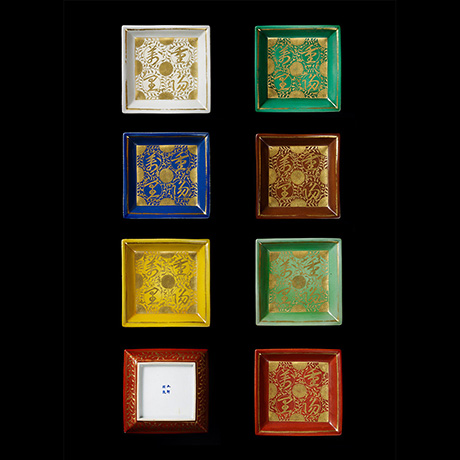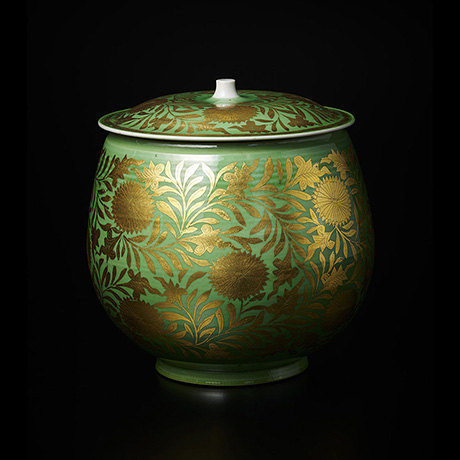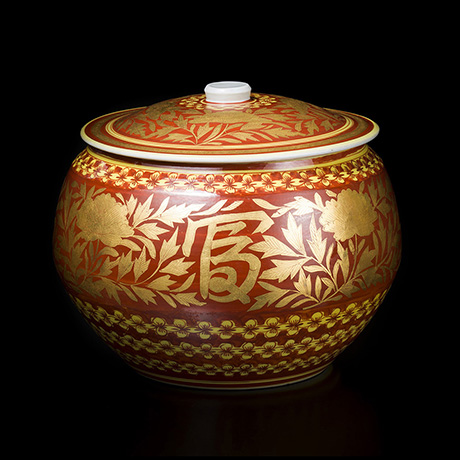-
箱
Box -
共箱
with box signed by the artist -
サイズ
Size - 19.4/H4.3cm
古来の金襴手には二種あり、土師萌先生は金泥と言われる絵筆で描いたものを「金彩」と称し、金箔 を漆で貼り焼付けたものを「金襴手」と言った。本作品はより高度な技術が必要とされる金箔を使う金襴手である。萌黄、赤、黄、緑、白、茶、青地に「重陽萬里」の文字を埋めるかのように 9 つの菊と唐草が金襴手で配されている。重陽は陰暦の 9 月 9 日で五節句の一つである。中国では奇数を縁起 の良い陽の数とし、陽の最大数が重なることから、幸が多い日と考えている。この四方角皿の形は中国嘉靖年間に多く見られるが、七種の色替わりを全て成功されている土師萌先生の卓越した技術力に感服する。昭和30年に行われた第二回伝統工芸展でもこの圧巻の内容の仕事が話題になったのではないかと想像する。高台内には「土師萌製」の他に「大日本土師萌」と染付銘があるものもあり、 先生の誇り高き思いが伝わってくる作品である。
1999年東京国立近代美術館『近代陶芸の精華 加藤土師萌展』出展作品
There are two kinds of Kinran-de, which KATO Hajime clearly identified its name by each technique: Kinsai, brush painted with gold mud, and Kinran-de, the gold leaves are sticked to the body with Japanese lacquer. This item is the Kinran-de, which is technically difficult. Nine Chrysanthemum and arabesque decorates around the four letters 重陽萬里 on each plate in pale green, red, yellow, green, white, brown and blue. The repeating number of nine, the letter 重陽 also means September ninth, is the fortune numbers in Chinese principal of Ying and Yang at most, in which the nice is the largest odd number. This square shape plates are seen among the pieces from Jiajing period in China. It is amazing of his superior technique that he had succeeded all seven colors. It is easy to imagine his works were among the conversation when exhibited at the 2nd Appreciation of Japanese Traditional Crafts in 1955. There are his inscription “土師萌製” on the foot, as well as “大日本土師萌” in blue. It is a work that conveys the sense of pride of the artist.
* Listed in the exhibition “Kato Hajime:the quintessence of modern Japanese ceramic art
t” in 1999.



